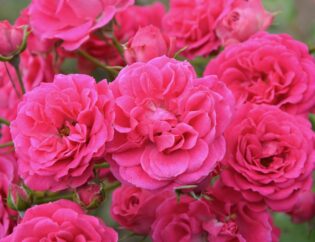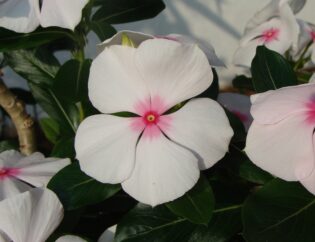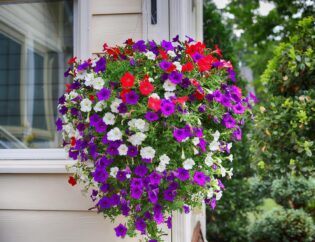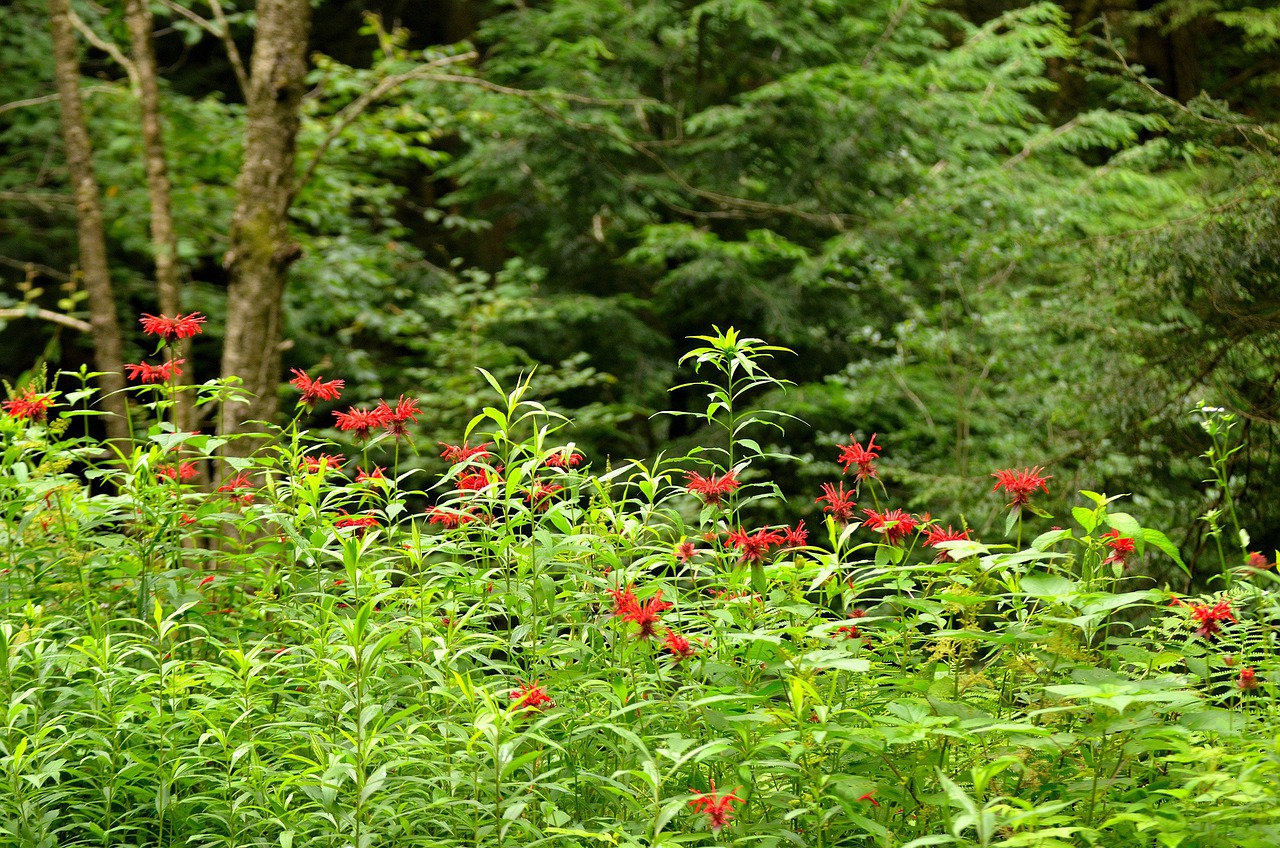
Looking for a stunning perennial plant with a long growing season? How about one that adds brilliant color to the garden while attracting beneficial wildlife like birds and bees? Look no further than bee balm plants!
These gorgeous native wildflowers are right at home in Atlanta gardens. Read on to learn how to grow bee balm plants in your yard.
What Is Bee Balm?
Bee balm is a lovely flowering perennial that grows quickly, often flowering big, spiky, clusters of beautiful blooms in its first season. The unusual look of the red, pink, white, and purple blooms is enticing to both human eyes and wildlife.
The plant grows between 10 inches and 4 feet tall and the blooms are definitely the star of the show. The plant has green, oval leaves with downy undersides. Seed heads left over from the summer will attract birds to the garden in winter, adding interest at an otherwise drab time of year.
Where Should I Plant Bee Balm?
Because of its taller plant height, it makes a great background plant. The unremarkable foliage isn’t that exciting anyway so having other shorter plants in front is a prudent design choice. After all, it’s the flowers that are the main attraction.
This plant looks great layered in cottage style and native plant gardens. It also works well in borders. The plant adds color and texture, important elements of the overall landscape design.
The plant is susceptible to powdery mildew, so be sure to plant it in a location with plenty of air circulation and well-drained soil. Space the plants 18-24 inches apart, as crowded plants fall prey to fungal disease more easily. Further, plant in a spot that receives full sun.
When Should It Be Planted?
Bee balm plants can be installed both in the spring and fall. They can easily be grown from seed by collecting dried flower heads in the fall or commercial seeds are available for purchase.
If using seeds, start them indoors about 8 weeks before the last frost and only place them outdoors after all danger of frost has passed.
What Wildlife Does It Attract?

Bee balm flowers are lovely not only to human eyes but also to a variety of wildlife species. The spiky look of the blooms is actually a mass of tubular flowers dripping with pollen and nectar.
Hummingbirds, butterflies, moths, and bees all adore this colorful plant. However, it is a particular favorite of bumble bees.
Can I Plant Bee Balm in Containers?
It isn’t overly common to see bee balm in containers. The herbaceous perennial is typically seen out in garden beds or along borders. However, some urban gardeners will use it in their courtyards or patios in an effort to attract wildlife to their gardens.
To be effective at this task, the plant needs to be quite large so be sure to use large 5-10 gallon containers. Again, drainage is key to help avoid root rot and powdery mildew.
Is It a Native Plant in Georgia?
Bee balm is a native perennial wildflower in North America and has appeared in American gardens since before the Revolutionary War. Historically, it was a prized plant for medicinal purposes. It was often used to treat bee stings, digestive disorders, and even headaches.
The plant grows well in both partial shade and full sun, which it prefers. Overall, bee balm is quite easy to grow and a great choice for native plant gardens.
Do Bee Balm Plants Spread?
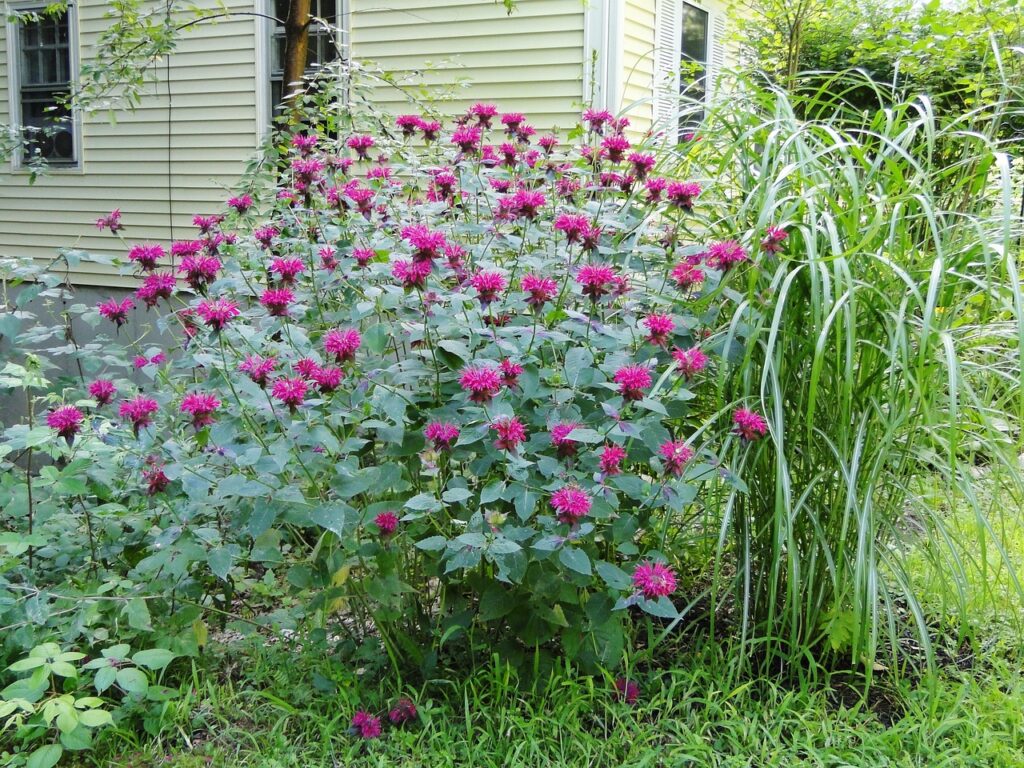
Bee balm plants spread quite easily. In fact, one of the best ways to propagate new plants is to dig up and divide the underground stems.
Gardeners should do this in the spring when the new stems start to appear. Dig up the clumps and divide them with a sharp knife. Make sure that each section has a couple of shoots and strong roots.
Plant them in the new location and water well.
Should I Deadhead Bee Balm?
Bee balm plants have a long growing season, which is one of the reasons why people love them for their perennial landscaping. To prolong this season, homeowners should prune the plants periodically.
Deadheading the flowers immediately after blooming will encourage repeat flowering and prolong the blooming season. Additionally, this will also help avoid unwanted self-seeding. On that note, another way to prevent unwanted seedlings is to install landscape fabric.
On the other hand, removing the seeds will reduce visits from birds which may or may not be desirable based on homeowner preference.
Is Bee Balm Toxic to People or Pets?
Bee balm is not considered toxic to people or pets. In fact, it has been used historically for a variety of medicinal purposes.
It was even used as a tea substitute after the Boston Tea Party. However, ingesting it in quantity can result in an upset stomach, and there are other tea options with superior flavor. The flavor has been described as herbal with notes of mint, citrus, and even oregano.
Bee balm also makes a gorgeous addition to a cut flower bouquet and can be turned into a lovely potpourri. With all its beauty and uses, this native perennial makes a lovely addition to any Georgia garden!
Have a Project in Mind?
Our landscaping professionals at Atlanta Turf & Tree have 35 years of combined experience turning Atlanta-area yards into works of living, lasting art. Contact our landscaping services experts to get going on your next project!
